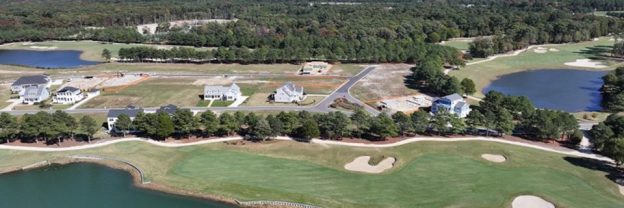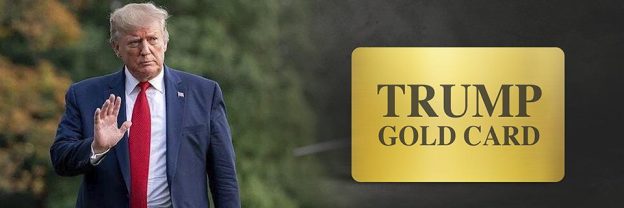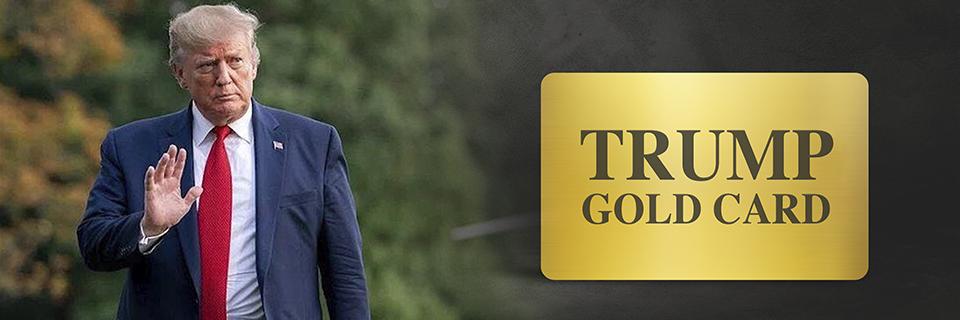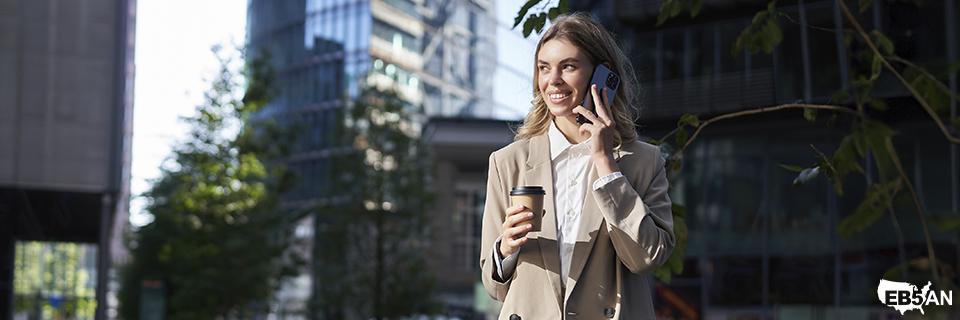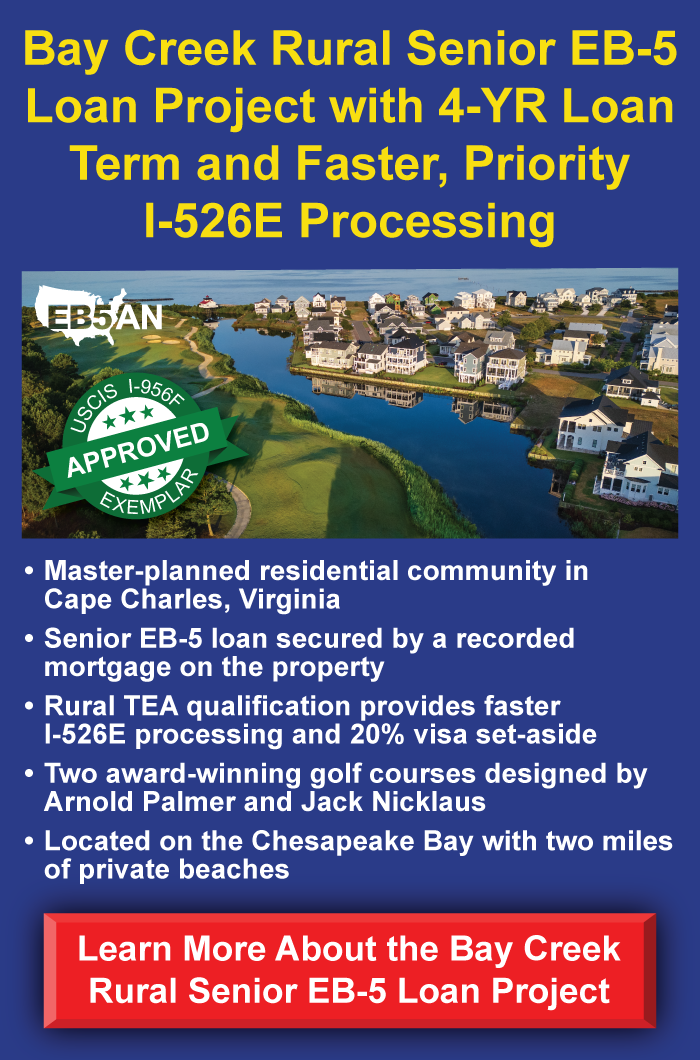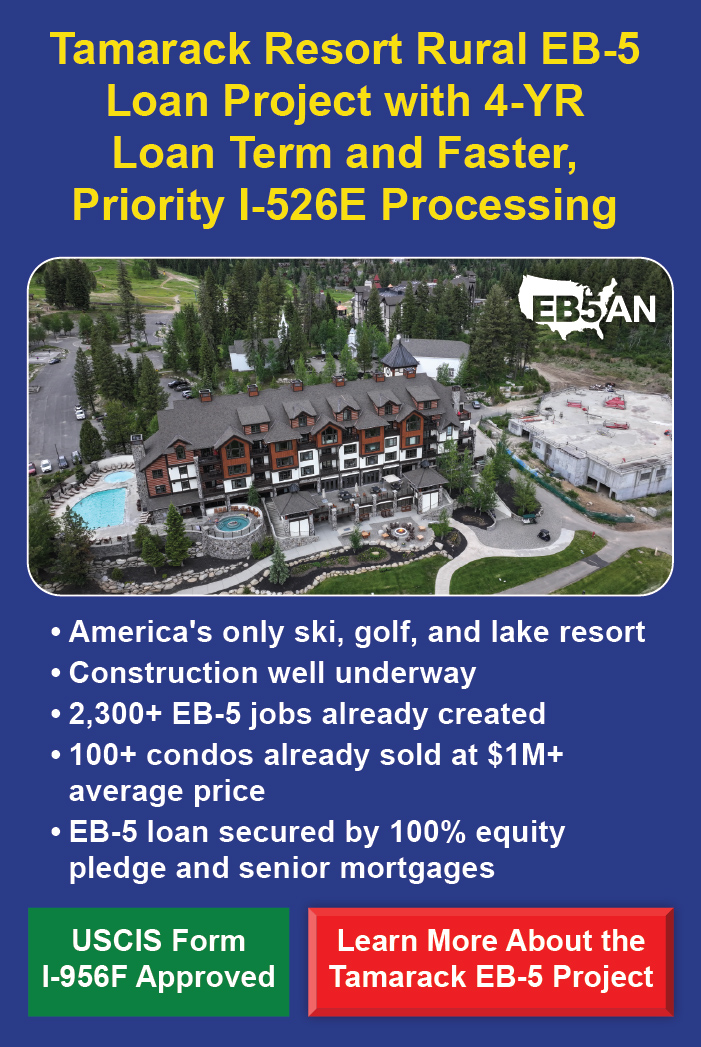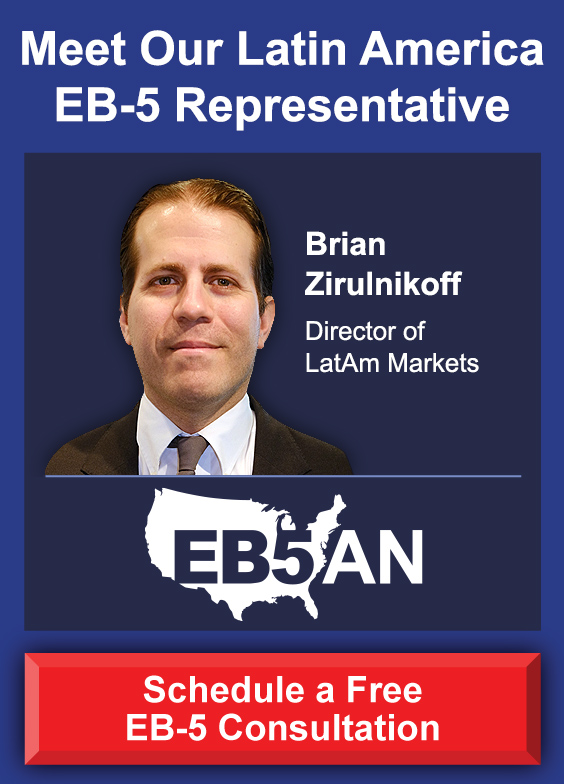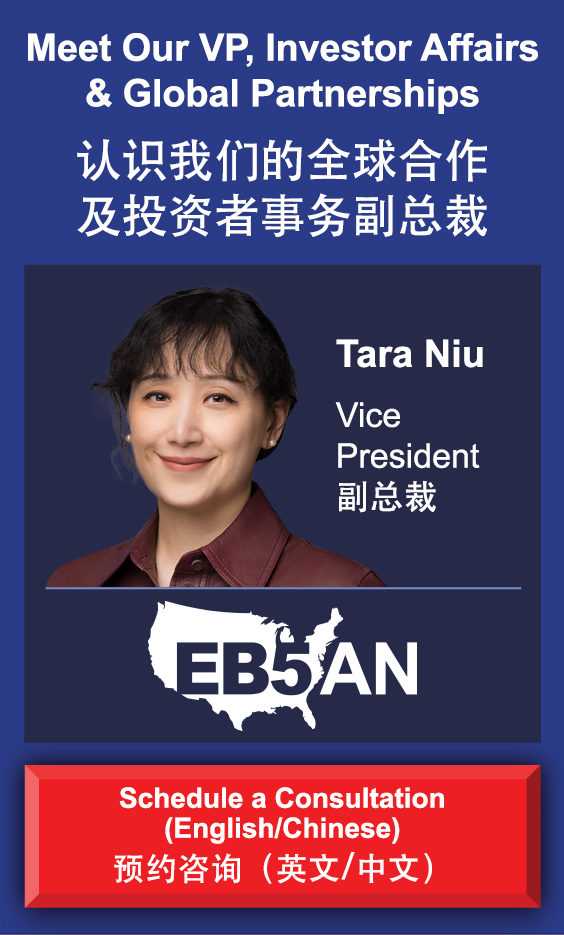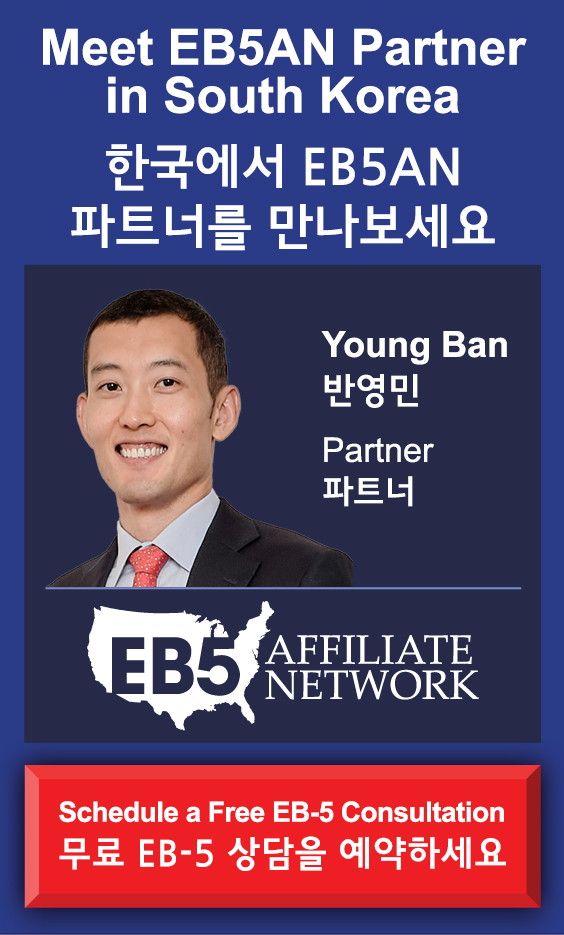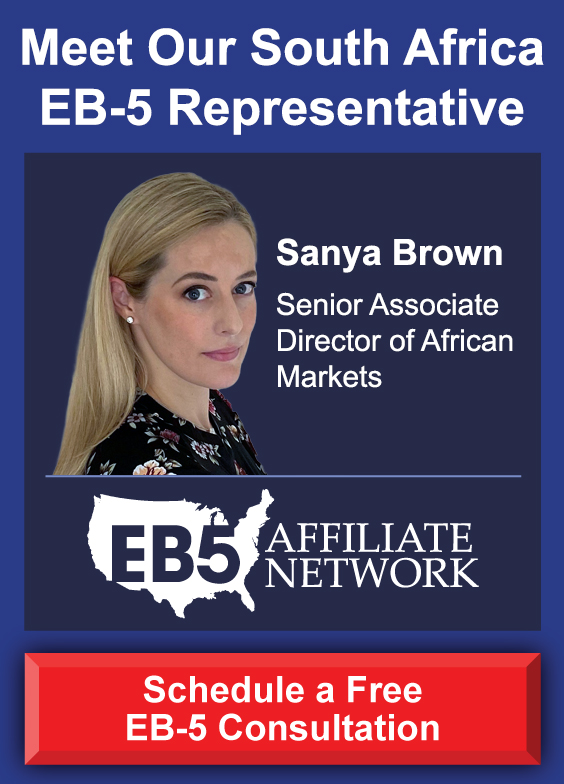
Every year, thousands of foreign workers apply for the H-1B visa, hoping to live and work in the U.S. legally. However, the growing demand for H-1B visas and strict government limits make it harder to secure one. Luckily, you have other options.
Understanding these options, including their requirements, benefits, and limitations, helps you plan your U.S. career journey with more flexibility and confidence. While some of these alternatives can lead to permanent residency, others serve as temporary solutions to gain experience in the country.
In this article, we will explore 10 alternatives to the H-1B visa to live and work in the United States so you can understand how they might fit your goals.
Why the H-1B Visa Is Now Harder to Get
Other Visas That Allow You to Work in the U.S.
Summary of the Best H-1B Alternatives
A Closer Look at the EB-5 Program
Explore Your U.S. Career Options With EB5AN
Why the H-1B Visa Is Now Harder to Get
The H-1B visa process has gone through major updates lately, with even more changes on the way. One of the biggest shifts came with the H-1B Modernization Rule, which officially took effect on January 17, 2025. These are the main areas of recent and planned reform that will affect applicants and employers who sponsor foreign workers under the H-1B program:
- Beneficiary-centric lottery: For FY 2025 and thereafter, United States Citizenship and Immigration Services (USCIS) will enter each individual applicant into the H-1B visa lottery only once, regardless of how many employer registrations are submitted for that person. If a beneficiary is selected, all employers who registered that beneficiary will be eligible to file. This replaces the old system, which allowed multiple entries per person.
- Proposed wage-based lottery: A major proposed change would replace the random lottery system with a system that prioritizes H-1B visas for applicants who have been offered higher wages.
- Stricter “specialty occupation” rules: The government has redefined what qualifies as a “specialty occupation.” Employers must now demonstrate a clear, logical connection between the applicant’s academic degree and the specific job duties. For positions at third-party locations, the duties performed at that site must independently meet the specialty occupation criteria. This means that the actual work being done carries more weight than what the employer describes in the petition.
- Increased scrutiny on third-party placements: There are new, stricter requirements for employers who place H-1B workers at third-party client sites, with increased oversight and documentation needed. USCIS can request contracts, work orders, or similar evidence to validate third-party arrangements and verify that the assignment is bona fide.
- Expanded authority for site visits: Immigration authorities now have expanded authority to conduct site visits, including at third-party worksites and remote locations such as an employee’s home. A failure or refusal to cooperate may lead to the denial or revocation of visa petitions. If a site visit reveals inconsistency or USCIS cannot verify essential facts, then the petition may be denied or revoked (after notice and opportunity to rebut in many cases).
- New $100,000 H-1B fee: A new $100,000 supplemental fee was announced in September 2025 for certain new H-1B cases, with USCIS guidance clarifying scope and exceptions. It does not apply to existing H-1B holders’ renewals.
- Other integrity and compliance measures: USCIS now has the authority to deny or revoke petitions for invalid registrations, such as those with rejected or disputed payments, or for false attestations.
Other Visas That Allow You to Work in the U.S.

Below are ten visa and immigration options that can serve as alternatives to the H-1B. Each one fits different career paths, backgrounds, and goals. Understanding how they work helps you make a more informed decision about the best route for your situation.
Visas for Skilled Professionals
1. L-1 Visa
The L-1 visa allows multinational companies to transfer certain employees from a foreign office to a related U.S. office. It has two main types:
- L-1A for executives and managers.
- L-1B for employees with specialized knowledge.
For the L-1 visa:
- Foreign and U.S. entities must have a qualifying relationship, such as parent or subsidiary.
- Applicants must have worked for the foreign company for at least one continuous year within the past three years.
- The initial stay is up to three years, or one year for new U.S. offices, with renewals possible.
- Total stay cannot exceed seven years for L-1A or five years for L-1B.
2. TN Visa
The TN visa is for Canadian and Mexican professionals working in specific occupations under the USMCA agreement and has the following criteria:
- Applicants must have a prearranged job offer in a qualifying field like engineering, accounting, or science.
- A bachelor’s degree or equivalent experience is usually required, and the position must be temporary.
- Self-employment is not allowed.
- Canadians can apply directly at a U.S. port of entry, while Mexicans must apply through a consulate.
- The visa is valid for up to three years and can be renewed indefinitely if eligibility continues.
3. E-3 Visa
The E-3 visa allows Australian citizens to work in specialty occupations in the United States. For this visa:
- You must have at least a bachelor’s degree and must hold the relevant qualifications.
- The U.S. employer must file a Labor Condition Application with the Department of Labor.
- The visa is valid for two years and can be renewed indefinitely in two-year increments.
- There is an annual cap of 10,500 visas, but it rarely fills up.
- Spouses can apply for work authorization, while dependents under 21 can study but not work.
Visas for Extraordinary Ability and Achievement
4. O-1 Visa

The O-1 visa is for individuals who have extraordinary ability or achievement in fields such as science, arts, business, education, or athletics. Here:
- Applicants must show sustained national or international acclaim, often proven through awards, media coverage, or peer recognition.
- A U.S. employer or agent must file the petition, supported by an advisory opinion from experts in the applicant’s field.
- The initial period of stay is up to three years, with one-year extensions available.
- O-2 visas are available for essential support personnel, and dependents can apply under O-3 status.
5. EB-1 Visa

The EB-1 visa is an employment-based Green Card for individuals with extraordinary ability, outstanding professors or researchers, and multinational executives or managers. Important details about this visa type include:
- The EB-1A category allows self-petitioning without an employer, while EB-1B and EB-1C require sponsorship by a U.S. employer.
- Applicants must show sustained recognition in their field through major awards or documented achievements.
- No labor certification is required, which speeds up the process compared to other Green Card categories.
- Once approved, the applicant and immediate family can apply to become permanent residents.
6. EB-2 Visa
The EB-2 visa provides a path to permanent residency for individuals with advanced degrees or exceptional ability in business, science, or the arts. For this visa:
- Most applicants need a job offer and a labor certification from the Department of Labor.
- Those applying under the National Interest Waiver (NIW) can self-petition if their work benefits the United States.
- You must show strong evidence of qualifications such as degrees, experience, publications, or recognition in your field.
- Once approved and when the priority date becomes current, you and your family can apply for Green Cards.
Other Alternative Visa Options
7. F-1 Visa

The F-1 OPT is a temporary work authorization for foreign students studying in the United States. It allows them to gain hands-on experience related to their major for up to 12 months after graduation. Here:
- Students must apply with authorization from their school and USCIS before starting work.
- Those with STEM degrees can apply for a 24-month extension, bringing the total to 36 months.
- The work must be directly related to the student’s field of study.
- F-1 students must maintain legal status and report employment updates to their school during OPT.
8. H-1B1 Visa
The H-1B1 visa allows professionals from Chile and Singapore to work temporarily in U.S. specialty occupations. Under this visa:
- The job must require specialized knowledge and at least a bachelor’s degree.
- Employers must file a Labor Condition Application with the Department of Labor before hiring the applicant.
- Dual intent is not allowed, unlike the standard H-1B visa.
- The initial stay lasts one year, with limited extensions possible.
- Dependents can join under H-4 status, though they cannot work in the U.S.
9. E-2 Visa
The E-2 visa allows nationals of treaty countries to invest in and manage a U.S. business. For E-2:
- Applicants must invest a substantial amount of capital that is sufficient to ensure the success of the enterprise.
- The business must be real, active, and capable of generating more than minimal income.
- The investor must own at least 50% of the business or have operational control.
- The visa is granted for up to two years and can be renewed indefinitely as long as the business remains viable.
- Spouses can work in the U.S., while dependents under 21 can live and study there.
10. EB-5 Visa
The EB-5 visa, also known as the Immigrant Investor Program, remains one of the most direct and reliable paths to live and work permanently in the U.S. for those with the financial means. Key details about the program include:
- Investors can either invest directly in their own commercial enterprise or through a USCIS-approved regional center.
- Qualified investors and their families can obtain Green Cards if they meet the program’s requirements.
- After two years, you can apply to remove conditions to become an unconditional permanent resident.
- Recipients have the freedom to live, work, attend schools anywhere in the United States, and gain a path to U.S. citizenship if eligible later.
Summary of the Best H-1B Alternatives
Here is a comparative overview of the main alternatives to an H-1B visa for foreign nationals who want to stay in the United States.
| S/N | Visa / Status | Immigrant or Non-immigrant | Best suited for / key features & limits |
| 1. | L-1 (Intracompany transferee) | Non-immigrant (but allows “dual intent”) | Employees of multinational companies who’ve worked abroad ≥ 1 year and are being transferred to a U.S. affiliate in a managerial/executive (L-1A) or specialized knowledge (L-1B) role. |
| 2. | TN (USMCA / NAFTA professionals) | Non-immigrant |
|
| 3. | E-3 (Australian specialty occupation) | Non-immigrant (not strictly dual intent) |
|
| 4. | O-1 (Extraordinary ability) | Non-immigrant (but often treated as dual intent) |
|
| 5. | EB-1 (Employment-based first preference) | Immigrant | Permanent residency (Green Card) category for “priority workers” (extraordinary ability, outstanding researchers, multinational executives). |
| 6. | EB-2 (Employment-based second preference) | Immigrant |
|
| 7. | F-1 (Student visa) | Non-immigrant |
|
| 8. | H-1B1 (Chile / Singapore specialty worker) | Non-immigrant |
|
| 9. | E-2 (Treaty investor) | Non-immigrant |
|
| 10. | EB-5 (Immigrant investor) | Immigrant |
|
A Closer Look at the EB-5 Program
The EB-5 program was established in 1990 to encourage economic growth by attracting foreign capital and creating American jobs. To qualify, you must meet several key requirements:
- Minimum investment amount: The standard investment in a qualifying project is $1,050,000, or $800,000 if the project is in a Targeted Employment Area (TEA).
- Job creation: The investment must create or preserve at least 10 full-time U.S. jobs. Regional center investors can count both direct and indirect jobs, while direct investors must create them directly within their enterprise.
- At-risk capital: The funds must be at risk for profit or loss, not a guaranteed return, and must remain invested for at least two years.
- Lawful source of funds: You must prove that the investment funds come from lawful and traceable sources.
- Commercial enterprise: The investment must go into a for-profit business.
- Conditional permanent residence: After approval of Form I-526/I-526E, you and your eligible family members receive two-year conditional Green Cards. To remove conditions, you must later file Form I-829 and show that the investment was sustained and jobs were created.
Explore Your U.S. Career Options With EB5AN

If you’re an H-1B visa holder who is worried about your long-term chances of living and working in the United States, there are many alternatives that can help you achieve your career dreams. While the EB-5 visa program is the most stable and rewarding path to permanent residency, it can be daunting without professional guidance.
EB5AN is a trusted EB-5 firm with over a decade of experience guiding foreign nationals toward U.S. permanent residency. To date, we have supported more than 2,700 families in obtaining Green Cards.
Book a free call with us today to better understand which visa category best suits your goal of living and working in the United States.




